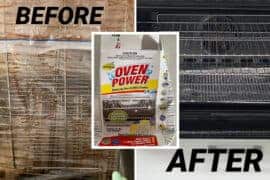The Ultimate Guide to Homemade Play Dough: Fun and Easy for Parents
Hello, wonderful parents and guardians out there! Are you looking for a simple way to spark your child’s imagination and keep those little hands busy? Well, you’ve come to the right place! Today, we’re going to dive into the colorful world of homemade play dough. It’s not just about fun; it’s a fantastic sensory activity that promotes children’s development. Plus, it’s incredibly easy to make at home with ingredients you likely already have in your pantry!
Why Homemade Play Dough is the Best
Before we whip up a batch of this squishy goodness, let’s talk about why homemade play dough is such a hit. First of all, it’s cost-effective and you can make endless amounts without breaking the bank. Secondly, it’s non-toxic, which means it’s safe for your children, and you control the ingredients. Lastly, creating play dough can be a delightful bonding activity; it’s a chance for children to learn, explore, and play with colors and textures while spending quality time with you.
Ingredients for Your Play Dough Masterpiece
Here’s what you’ll need to get started on your homemade play dough adventure:
- 2 cups of all-purpose flour
- 1/2 cup of salt
- 2 tbsp of cream of tartar (for elasticity)
- 2 tbsp of vegetable oil
- 1 1/2 cups of boiling water
- Food coloring (liquid, gel, or powder)
- Essential oils for scent (optional)
- Glitter (optional, for that extra sparkle)
Step-by-Step Play Dough Recipe
Excited? Let’s get those hands messy! Here is a step-by-step guide to making your very own play dough:
- Combine Dry Ingredients: In a large mixing bowl, whisk together the flour, salt, and cream of tartar.
- Add Oil: Mix in the vegetable oil until it’s well dispersed through the dry ingredients.
- Boiling Water: Carefully pour the boiling water into the mixture. Begin to stir immediately with a spoon to bring the dough together.
- Color It Up: Once the dough has cooled down enough to handle, divide it into balls for different color batches. Press a hole in the center of each ball and add the food coloring. Fold the dough over the color and knead until the color is evenly distributed. Protect your hands with gloves if necessary to avoid staining.
- Add Extras: If you’re using essential oils for scent or glitter for a touch of magic, this is the moment to add them. Just a few drops of oil or a sprinkle of glitter will do the trick. Knead the dough again to spread them throughout.
- Play Time! Once your play dough is vibrant and smooth, it’s ready for action! Bust out those cookie cutters, rolling pins, and imaginative minds for hours of playful creation.
As you watch your little ones rolling, cutting, and molding, you’ll get a warm feeling of accomplishment knowing you provided this moment of joy and creativity. Plus, homemade play dough often lasts longer than store-bought varieties when stored properly. Just keep it in an airtight container in the cool and dry place, and it can stay fresh for several months.
But that’s not all; there are even more excellent play dough recipes to explore. For example, if you want a gluten-free option or you’re interested in a no-cook formula that’s safer for kids’ participation, stay tuned. We’ll ensure you have all the recipes you need to create the ultimate play dough stash!
In our next section, we’ll explore some alternative recipes, dive into play dough troubleshooting, and learn about fun activities to do with your freshly made dough. Because let’s face it – play dough is more than just a child’s plaything; it’s a vehicle for learning and a catalyst for imagination!
Whether it’s a rainy day activity, a birthday party craft, or just a regular Tuesday afternoon, your homemade play dough is sure to become a household favorite. So, tie on those apron strings, prep your workspace, and get ready for a fantastic DIY adventure with your child that’s just as enjoyable as it is educational!

Five Essential Tips for Parents Preparing Play Dough
Before you dive into making homemade play dough, here are five key tips that will help ensure a smooth, fun, and successful crafting experience:
- Prep and Organize: Get all your ingredients and utensils ready before you start. It’ll make the process more enjoyable and less stressful. Have a clear workspace and cover it with wax paper or a silicone mat for easy clean-up.
- Quality of Ingredients: Use the freshest ingredients for the best results. Even though we are not eating this dough, the quality of ingredients can affect the dough’s texture and shelf-life.
- Boiling Water Safety: If you have little ones wanting to help, take extra care with the boiling water step — it might be best to do this part yourself to prevent any accidental burns.
- Customizing Colors and Scents: When adding food coloring or scents, start with a small amount. You can always add more for a deeper color or stronger fragrance, but it’s difficult to remove if you add too much. Remember, a little goes a long way!
- Storing Play Dough: The way you store your play dough is crucial to its longevity. Always store it in an airtight container or a ziplock bag once it cools down. If the dough is too sticky after cooling, you can knead in a bit more flour until it reaches the perfect consistency.
Following these tips will help you create the perfect batch of play dough and make for a fun, hands-on experience with your kids. And now, let’s look at some alternative play dough recipes that cater to different needs and preferences!
Alternative Play Dough Recipes for Every Family
Every family is different, and we want to ensure that all can enjoy making play dough at home. Here are some alternative recipes that cater to various needs:
- Gluten-Free Play Dough: Use a gluten-free flour blend instead of regular all-purpose flour to create a safe option for children with gluten sensitivities.
- No-Cook Play Dough: Mix all the dry ingredients together and then add the oil and boiling water. This method is quick, easy, and kid-friendly since it eliminates the cooking process.
- Edible Play Dough: For younger children who like to taste their creations, you can make edible play dough. Mixing peanut butter, honey, and powdered milk creates a simple, edible, and moldable dough.
- Cornstarch and Conditioner Play Dough: Mixing conditioner and cornstarch in a 1:2 ratio will make an incredibly smooth and pliable dough that’s fun to touch.
And for the parents who might sometimes encounter some play dough predicaments, let’s go over some troubleshooting tips.
Troubleshooting Your Play Dough
Sometimes, things don’t go quite as planned, and you might find your play dough too sticky, too crumbly, or not vibrant enough. Don’t worry! Here are a few quick fixes:
- Too Sticky: Gradually knead in more flour until your dough reaches the desired consistency. The extra flour will absorb any excess moisture.
- Too Crumbly: If your dough is falling apart, it’s too dry. Try kneading in a few teaspoons of water or oil to add moisture.
- Dull Color: Add more food coloring a drop at a time and knead until you achieve the vibrancy you want. If using natural dyes, like spices or vegetable juices, remember they might not be as potent as artificial ones.
Play Dough Activities and Ideas
Making the play dough is just the beginning! Here are some fun ideas and activities to ignite your children’s creativity:
- Create a play dough town with roads, buildings, and trees.
- Develop fine motor skills by making play dough letters and numbers.
- Set up a pretend play dough bakery and make sweet treats.
- Learn about color mixing by combining different-colored dough to make new hues.
- Use themed cookie cutters for holidays and special occasions to make festive shapes.
Homemade play dough is a fantastic way to get crafty and spend quality time with your kids. So, roll up your sleeves and let the play dough extravaganza begin!
For more great fun click here. For more information see here
Disclaimer
The articles available via our website provide general information only and we strongly urge readers to exercise caution and conduct their own thorough research and fact-checking. The information presented should not be taken as absolute truth, and, to the maximum extent permitted by law, we will not be held liable for any inaccuracies or errors in the content. It is essential for individuals to independently verify and validate the information before making any decisions or taking any actions based on the articles.




